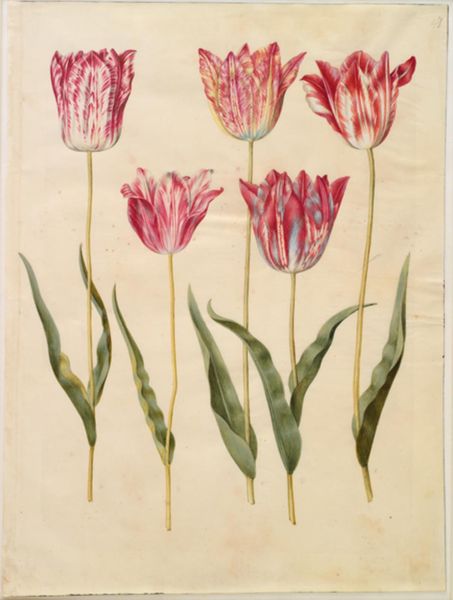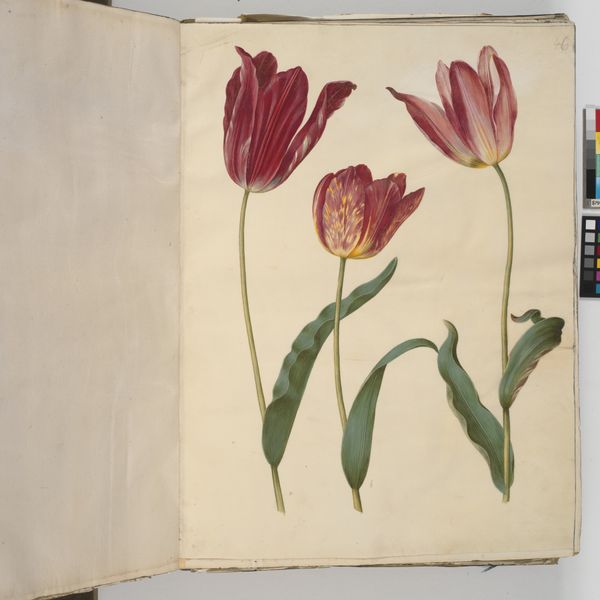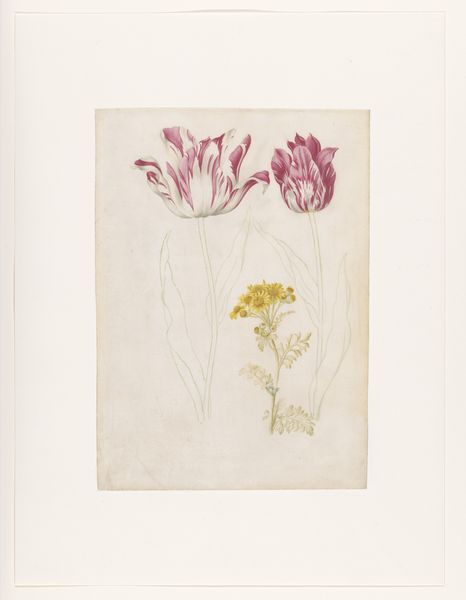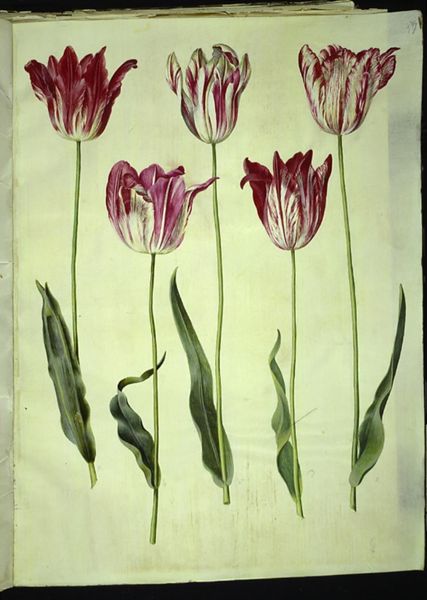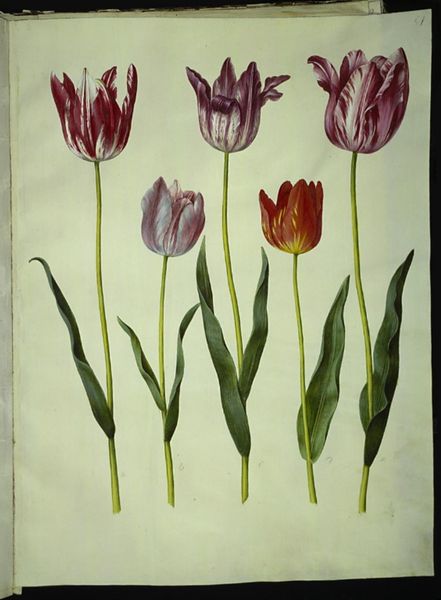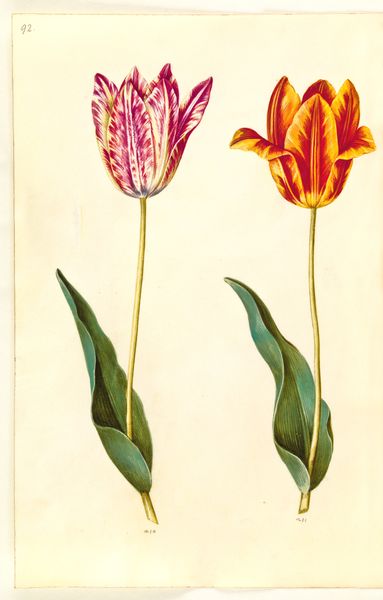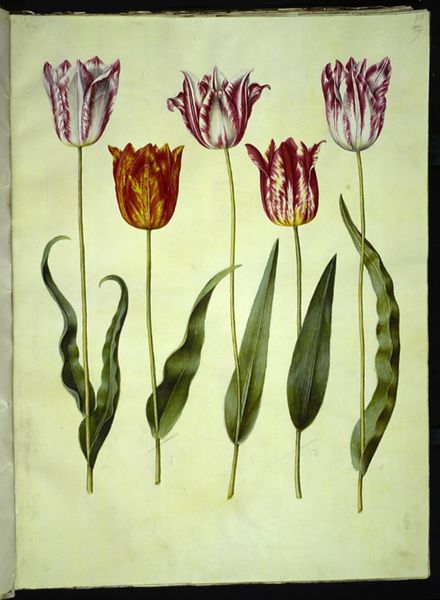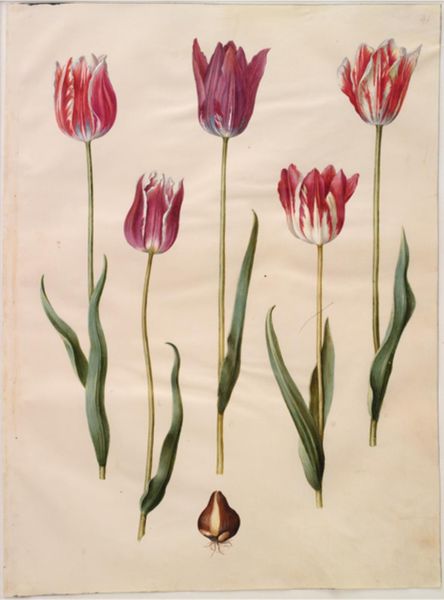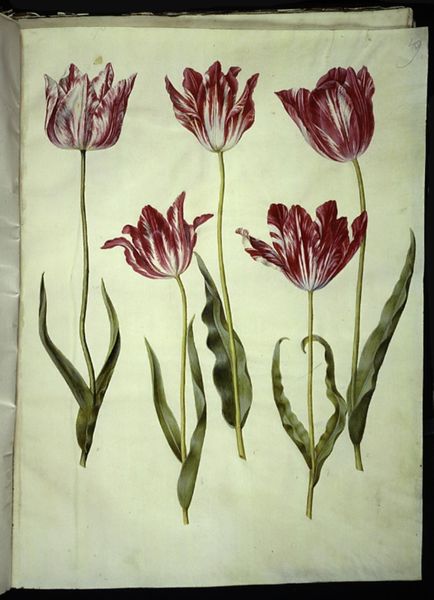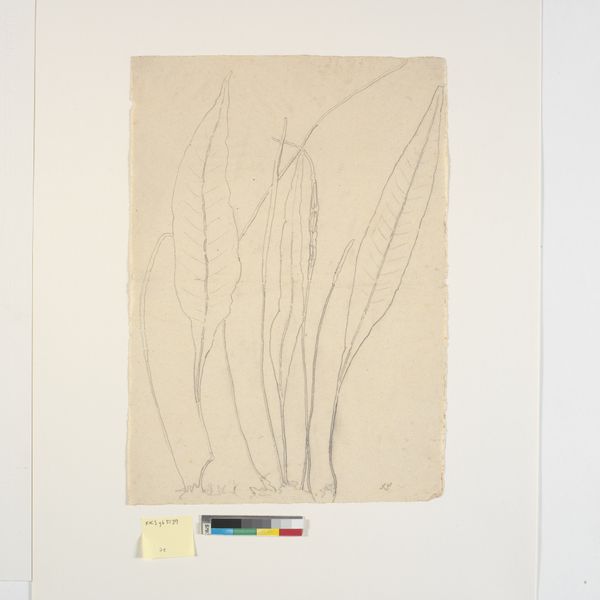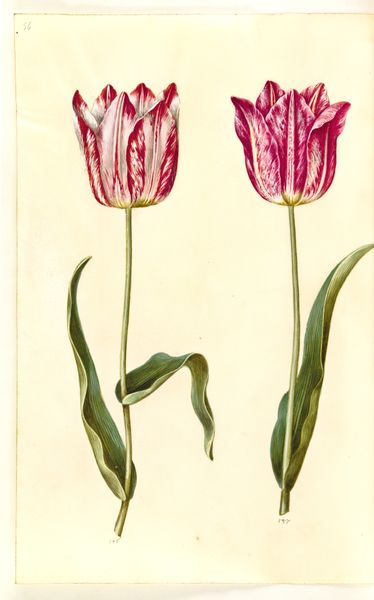
drawing, gouache, watercolor
#
drawing
#
water colours
#
dutch-golden-age
#
gouache
#
watercolor
#
watercolor
#
realism
Dimensions: 505 mm (height) x 385 mm (width) (bladmaal)
Editor: This is Hans Simon Holtzbecker’s "Tulipa gesneriana," created between 1649 and 1659 using watercolors, gouache and drawing. The image has an elegant simplicity, just several tulips, meticulously rendered. It almost feels… scientific. What do you see in this piece, beyond the obvious beauty? Curator: More than simple beauty, I see the weight of desire. In the Dutch Golden Age, tulips weren't just flowers, they were potent symbols of wealth, status, and even fleeting human obsession. Note the detailed variegation; each stripe speaks of a unique strain, a coveted object. Can you see how each tulip portrait is as much about botanical accuracy as it is about capturing the individual "personality", the uniqueness of the specimen? Editor: I do, now that you mention it. They’re less like identical specimens and more like individual portraits of tulip-personalities. Does the color hold any specific meaning? Curator: Absolutely. The reds and yellows aren't merely aesthetic choices; they were historically significant. Red often represented passion or intensity, yellow could signal rarity, reflecting their commercial value. The juxtaposition creates visual tension, a silent narrative of beauty and its perceived worth. What feeling do the drooping leaves evoke in you? Editor: A little sadness, maybe, a reminder of their inevitable end? It tempers the almost arrogant display of color. Curator: Precisely! It's a memento mori in floral guise. This reflects a broader cultural preoccupation with mortality, subtly reminding the viewer that beauty, like fortune, is fleeting. Did you notice any recurring motifs like this elsewhere? Editor: Now I see it, thank you! The painting feels much richer knowing that history and symbolism. I initially saw an illustration, and now I see something more nuanced and meaningful. Curator: Indeed! These images whisper volumes when you understand their symbolic vocabulary. It transforms the artwork from simple still-life into a reflection of cultural values.
Comments
No comments
Be the first to comment and join the conversation on the ultimate creative platform.
